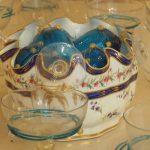Othello and Desdemona, Gabriele D’Annunzio and Eleonora Duse, Onassis and Maria Callas. Venice is the city of love, of romance, of lovers.
Venice is also the setting for A Venetian Affair, the true story of an impossible love by Andrea di Robilant the story of Giustiniana Wynne and Andrea Memmo in the waning years of the power of Venice, in the second half of 18th Century.
GIUSTINIANA WYNNE
Giustiniana Wynne, a beautiful Anglo-Venetian was born in Venice in 1737.
Her father Sir Richard Wynne was an English Protestant baronet who had reached Venice 2 years earlier and her mother Anna Gazzini was of Greek origin (they married only in 1739).
After the death of her husband, Anna moved with her children briefly to London to return then to Venice. Le inglesine di Sant’Aponal as they were referred to lived in San Polo, close to the Chuch of Sant’Aponal.
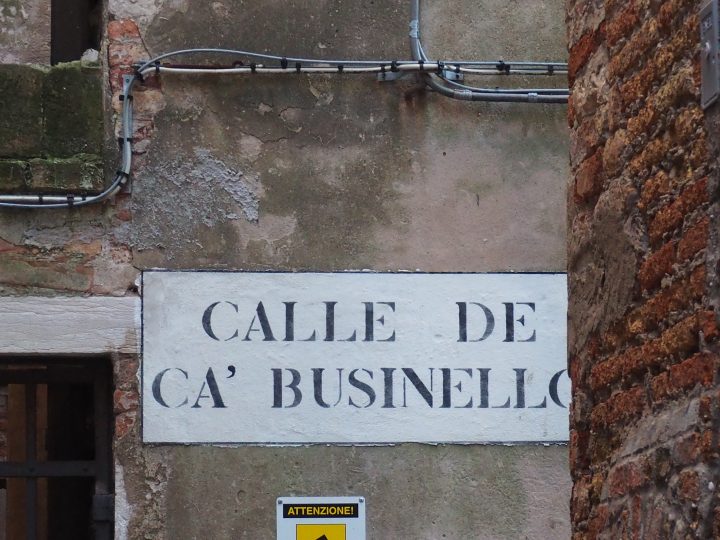
street leading to the Palazzo where the Wynnes stayed
ANDREA MEMMO
Andrea Memmo was the scion of one of the oldest Venetian families, the Memmos, from whose family 2 Doge’s originated. His family lived in Ca’ Memmo (Martinengo Mandelli), towards the west end of the Grand Canal, a palazzo built in the 18th century.
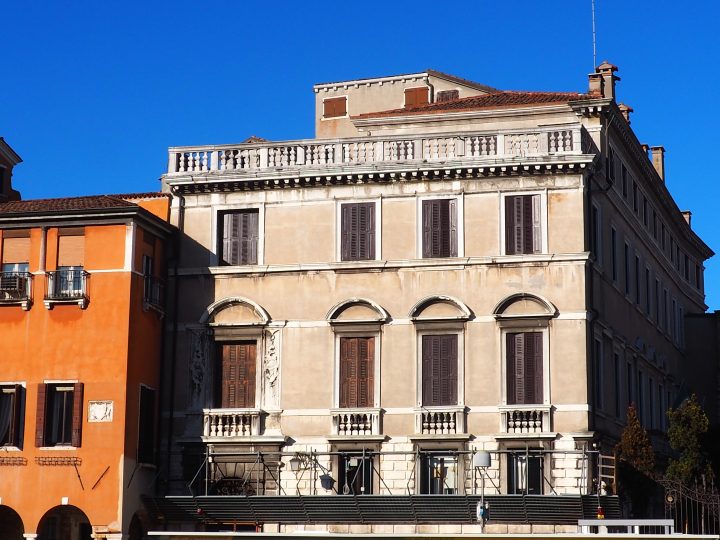
façade of Ca’ Memmo on the Grand Canal in Venice
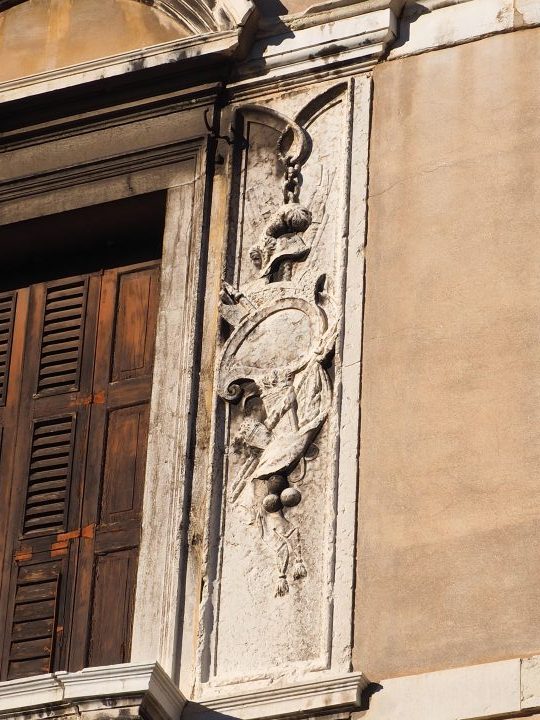
façade of Ca’ Memmo, one window above the door is nicely embellished
His uncle, also called Andrea, was the patriarch of the family and had chosen as successor his nephew Andrea, so the latter was under great pressure.
PALAZZO BALBI
Giustiniana was 17, Andrea was 24, when their affair started around late 1753 1754.
They first met in the palazzo Balbi where the English consul to Venice (1740 to 1760) Joseph Smith lived.
He lived close to the Memmos in the Palazzo Balbi (Smith Mangilli Valmarana), the first 2 floors in the neo-classical style were rebuilt between 1743 and 1751 by Antonio Visentin. The last two floors were commissioned later in 1784 to Selva by the following owner Giuseppe Mangilli. Later the palace passed to the Valmarana family from Vicenza.
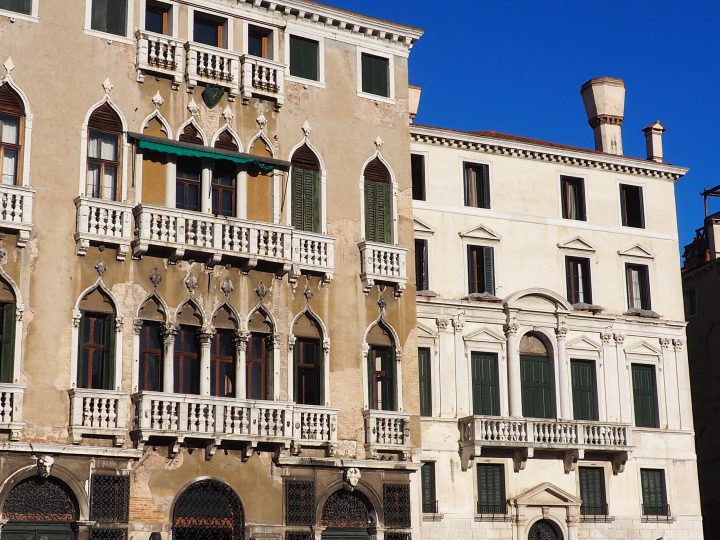
Palazzo Michiel dal Brusà and Palazzo Balbi on the Grand Canal
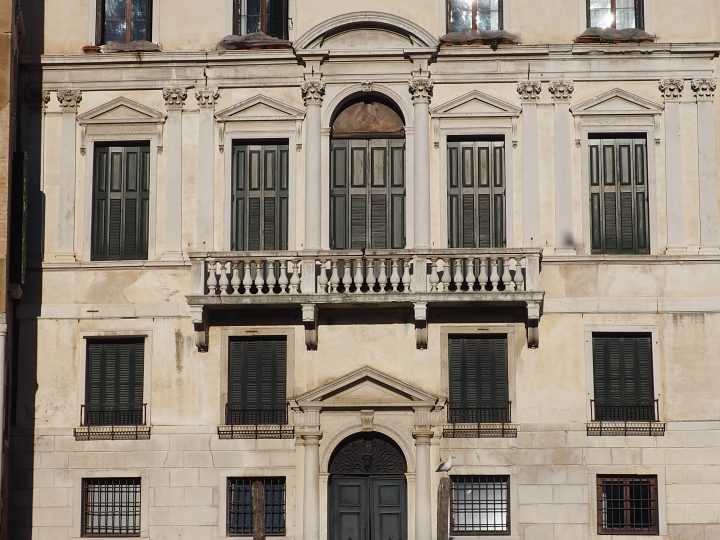
Palazzo Balbi on the Grand Canal
Smith, a great connoisseur of arts, was famous for his collection of paintings (patron and agent of Canaletto to George II, hence the Royal collection at Windsor) and books.
Andrea helped him to catalogue paintings and books and because of the English origins of Giustiniana Palazzo Balbi soon became her second home.
The formal match between Giustiniana, a British Protestant and Andrea, a Catholic Venetian nobleman belonging to the top élite of society was unthinkable. Their relationship had to be clandestine, as theirs was an impossible love.
They challenged the rigid Venetian society, social conventions and rules and codes based on rigid differences of social classes.
This prohibition came from all sides, not only from Venetian society, but also from Giustiniana’s mother (she was hoping to save her daughter’s reputation), Andrea’s parents (who were hoping for a much better match).
This prohibition fuelled their desire. They became very good at plotting behind the backs of their families, Giustiniana wrote how she was surprised at their audacity.
LETTERS
Enjoy this real story in the captivating book The Venetian Affair by Andrea di Robilant whose father found a satsh of over 100 letters. Amazing how a lot of these intriguing love letters of this intense, intimate correspondence still survive!
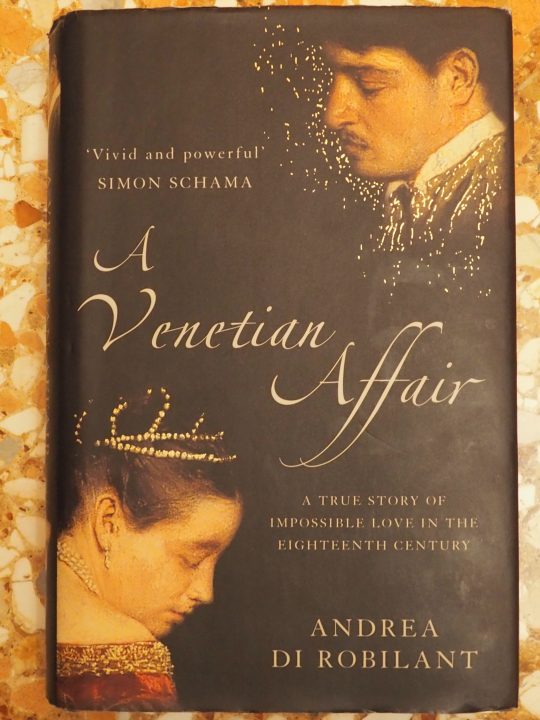
The Venetian Affair, A true story of an impossible love in the 18th century by Andrea di Robilant
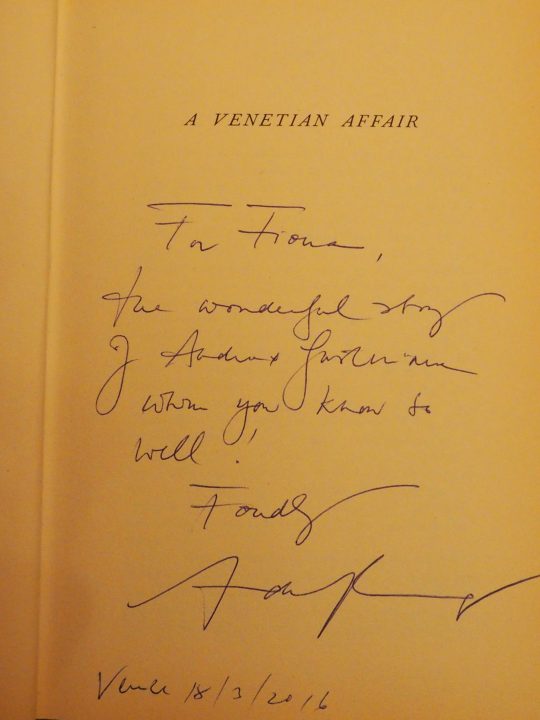
meeting the author Mr Andrea Di Robilant in Palazzo Rota Ivancich in 2016
In the Twenties Bruno Brunelli had found the first letters of Giustiniana to Andrea. And another treasure tove of letters was found by Mr Di Robillant in Randolph-Macon College in Ashland in Virginia, close to Washington.
These letters are passionate, ardent, full of desire, love, proving how their emotions were swinging between bliss and despair according to how their situation was evolving.
‘I am in heaven, I love you. I love you Memmo, more than I can say. Do you love me as much’.
In public in a theatre or in the Ridotto they pretended complete disinterest, longing for furtive kisses, finding stolen moments and brief frantic encounters. They developed their own sign language and their letters were cyphered.
Giustiniana would get jealous. And Andrea was jealous of her too.
Andrea knew Domenico Tiepolo whose family palazzo was close to the residence of the Wynnes on the Grand Canal. He would write to Giustiniana to come out on the balcony and he would be leaning over from the mezzanine of the palazzo with his portable telescope.
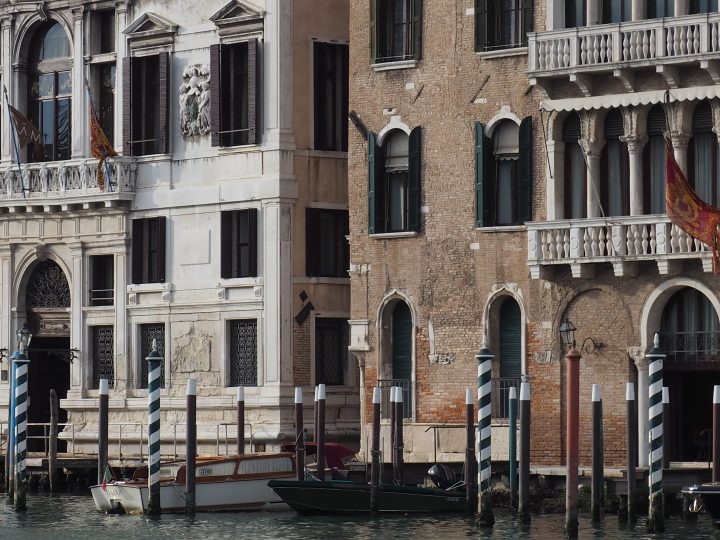
Palazzo Tiepolo and Ca’ Businello
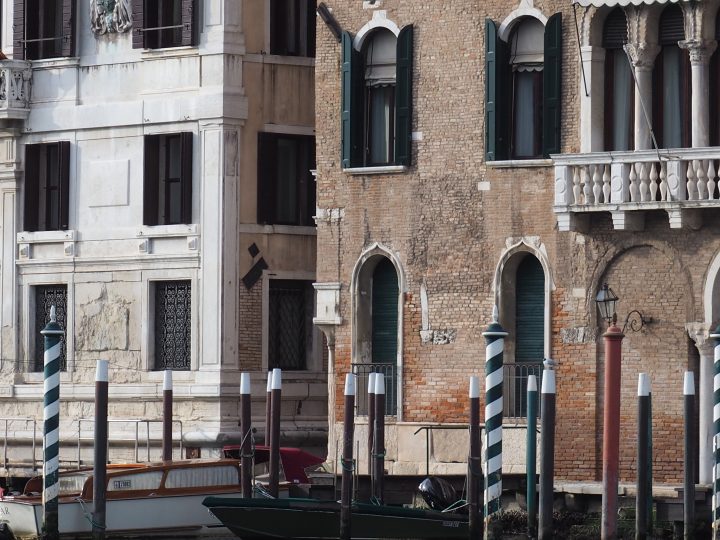
detail of the mezzanino of Palazzo Tiepolo
During Spring Summer 1755 their relation deepened.
‘My love, you govern my every action’ Andrea confessed.
But hopelessness of their situation creeped into the relation of these lovers; despite declaration of love and devotion they had no long term plans. Neither of them really thought that they might marry one day.
The death of Smith’s elusive opened a new possibility. Andrea believed the best solution for their relation was for Smith to marry Giustiniana (he was 80 years old, but in excellent form, Giustiniana only 18). Smith was interested in Giustinana, had always appreciated this bright girl. He bought a villa, nowadays no longer existing, on the mainland close to Mogliano for himself and chose one to rent out for the Wynnes at Le Scalette by Dolo, close nearby.
Giustiniana was instead worried she would not see much of her beloved Andrea. But luckily their friend Tiepolo owned also a property there. Giustiniana and Andrea had to enlist friends and servants to deliver letters, to help them organize their encounters.
The affair was secret, but a lot of Venetians realized what was going on.
Andrea joined his friend for summer and soon everyone starting noticing surreptitiously movements between Le Scalette and the Tiepolo Villa.
’Memmo, I always always think of you, always my soul, yes, always’.
The Smith debacle ended however with a big fiasco, the Consul marrying instead the sister of the English resident in Venice, Elisabeth Murray.
Anna discovered her daughter’s liaison and asked to meet Andrea upon their returned to Venice.
Andrea’s parents had started negotiating with the family Bentivoglio for a respectable marriage, but Andrea did not want to decide till the matter Giustiniana had been settled. Bentivoglio decided differently and all the Memmos including his mother Lucia blamed Andrea a lot for the missed opportunity.
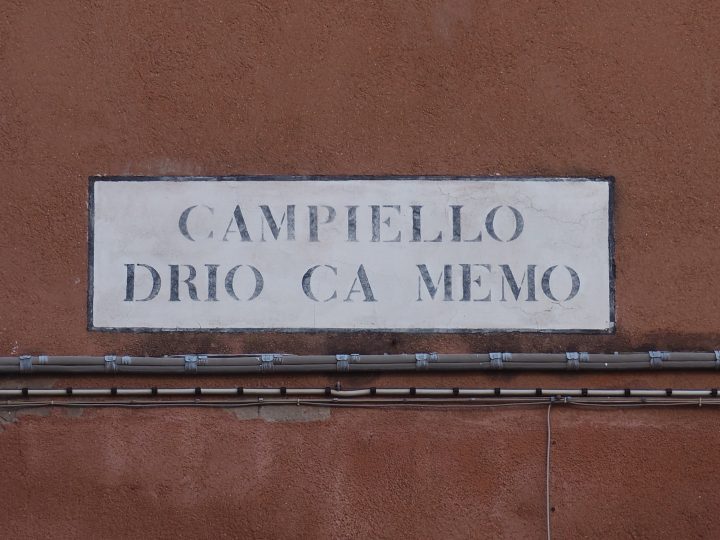
campiello small square behind Ca’ Memmo
Winter 1756 1757 was a cold and miserable winter, in addition Andrea’s sister died.
Andrea wrote to Giustiniana, ‘Our love has not vanished no matter how much it has been threatened’. Giustiniana did not reply at first. When she replied he was very happy and wrote back ‘My heart, how much I love you. I am so full of you and so happy you will be mine forever’.
Their relation after 4 years had changed. Andrea was much in love with Giustiniana and was even considering the unthinkable, asking for permission to marry Giustiniana to the Avogadori di Comun as he saw no other alternatives.
Giustiniana wasn’t sure whether her mother would agree. The Memmos however did not disregard the idea, so even Anna did not oppose and a contract was sent to the Avogaria di Comun.
During Carnival 1758 Andrea’s letters were full of hope, but alas in the summer a scandal broke out, about Anna’s dishonorable past, so in October she left Venice with her family.
Read the book to learn about Giustiniana’s stay in Paris, meeting with Casanova, her marriage in Venice in 1761 November to Count Rosenberg, and her later life of success as a writer.
Fiona Giusto
www.venicetours.it



